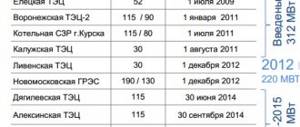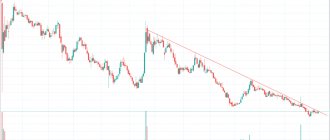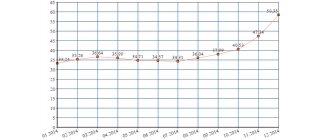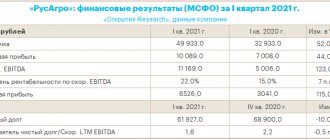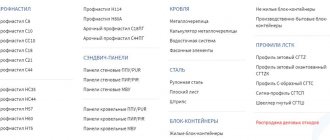TASS DOSSIER. On October 21, 2021, a fire occurred in Vladikavkaz; its area was 4.5 thousand square meters. m. The fire was extinguished; during the extinguishing, one firefighter died and two were injured. There were no casualties among the company's employees. As plant general director Igor Khodyko told TASS, Electrozinc will suspend operations for more than two months. The editors of TASS-DOSSIER have prepared a certificate about this enterprise.
JSC Electrozinc is one of the leading non-ferrous metallurgy enterprises in Russia, the largest in the Republic of North Ossetia-Alania. The plant produces and sells zinc, cadmium, sulfuric acid, zinc-aluminum alloys. The production is located in the north-eastern part of Vladikavkaz, its area is 70.2 hectares.
The plant is for sale
On June 2, the Ural Mining and Metallurgical Company (UMMC) put Electrozinc up for sale on the Avito classifieds website, asking 1.2 billion rubles for the plant. The announcement says that the property complex includes three land plots with a total area of 64.4 hectares and 216 buildings (432 thousand square meters), 141 vehicles, and more than 4.5 thousand pieces of equipment. Among the main advantages of the facility are: low cost of electricity (less than 2.0 rubles per 1 kW), a large reserve of capacity for all types of communications, especially in power supply, as well as “the presence in Vladikavkaz of a large number of qualified workers, especially in metallurgy.” The UMMC press service confirmed that Electrozinc is up for sale.
Current state of the enterprise
Since 2003, Electrozinc has been part of the Ural Mining and Metallurgical Company (UMMC). The President of UMMC is Iskandar Makhmudov, the General Director is Andrey Kozitsyn.
In 2021, Electrozinc produced over 73 thousand tons of zinc and 123 thousand tons of sulfuric acid, as well as 307 tons of cadmium.
The average number of employees as of 2021 is 1,806 people (of which 70% are men, 30% are women). The average age of employees is 44 years. The average salary is 41,155 rubles.
According to the reports, the revenue of Electrozinc OJSC in 2021 amounted to 4.9 billion rubles, net profit - 197.7 million rubles.
From February 1, 2013 to the present time, the General Director of Electrozinc OJSC is Igor Ivanovich Khodyko.
Fire at Elektrozinc
On the night of October 21, 2021, a fire occurred in one of the metallurgical workshops in Vladikavkaz. During the fire extinguishing, an emergency worker died and two more were injured. The fire was extinguished in an area of 4.5 thousand square meters.
The plant's work was suspended. The head of North Ossetia, Vyacheslav Bitarov, after disseminating calls on social networks for local residents to leave the city, said that “this is a provocation with the aim of agitating the people and creating a nervous situation among the population.”
However, the mayor of Vladikavkaz, Makharbek Khadartsev, demanded that Electrozinc be moved to the Urals, saying that the enterprise was ruining the health of local residents.
On October 22, 2021, residents of North Ossetia gathered for a spontaneous rally in Vladikavkaz, demanding the closure of the plant.
Activist Tamerlan Kambolov created a petition on October 21 demanding the closure of the plant. There is no question of closing Electrozinc due to a major fire, said the general director of the enterprise, Igor Khodyko.
However, after numerous protests from city residents, in December 2018, an agreement was reached between Vyacheslav Bitarov and the management of UMMC to mothball production due to the lack of technical ability to carry out the technological process. In preparation for mothballing, the enterprise temporarily opened two workshops for unloading raw materials and work in progress.
In April 2021, the plant management decided to shut down the last two workshops of the plant and begin measures to completely shut down the plant. On May 4, it was reported that the equipment had completely stopped and 1,800 employees of the enterprise were transferred to forced downtime, which involved payment of 2/3 of the average salary.
On May 31, more than a thousand (more than half) of staff were laid off. Of these, 217 workers retired, 82 were dismissed by agreement of the parties.
General information
OJSC Electrozinc is an industrial enterprise, part of the Ural Mining and Metallurgical Company, located in Vladikavkaz, North Ossetia. Produces and sells bronze, cadmium, lead, sulfuric acid, zinc and zinc-aluminum alloys.
At the end of 2015, Electrozinc's revenue showed an increase of 29.5% to 5.1 billion rubles, operating profit - 574 million rubles.
Production of the main types of products of JSC Electrozinc in 2015:
- lead: 14,432 tons;
- zinc: 56,622 tons;
- cadmium: 274 t.
As of 2015, about 1,879 people worked at Electrozinc.
"Electrozinc" is the second largest zinc producer in Russia and is currently the only competitor to Chelyabinsk Zinc in the market, accounting for about 40%.
By the end of 2021, Electrozinc planned to increase zinc production, and the overall increase in metal output by the end of the year should be 9.5 thousand tons.
electrozinc electrozinc
Yes. cool factory. If only he sold Zinc at market prices... there would be a profit of 1-2 yards and a whopping 1000 rubles per cigarette
No. There will be no miracles with any profit. Divas pay to sell shares. To increase capitalization and receive loans. If the goal is to buy all the shares, the divas do not pay. No need. This is even harmful - buying up shares will cost more. Arithmetic, although not entirely simple, dictates the law - if the real (and not shown) profit of the enterprise is more than 20%, you need to buy up 100% of the shares. Otherwise, contradictions among shareholders will increase sharply. Everyone wants to have such a percentage of profit and complexity is guaranteed, even if there are no legal grounds for making claims. Owners of money understand perfectly well that money should bring interest no less than inflation and even a little more. Otherwise, they smoothly and freely transfer their money to someone else. Electrozinc has a real profit of 300%. How should the owner of shares that bring such profits feel and not receive a penny? That's right, something like rabies. Except for the owner, who is confident that he will receive his profit. Sberbank (like any other shareholder who has the opportunity to wait) is currently such an owner. He will receive his profit in any case. Either in parts annually or once at the end. Moreover, the one-time receipt will be greater in amount than the annual profit. You can bypass this golden rule (practically deceive clients) only if the shares or part of them are held by many illiterate clients. For example, the remainder of the shares of Chelyabinsk Zinc, which the main shareholder bought for about 3 years, was in the hands of many small shareholders. And then the price rose to about 50% of the real one. In the case of Electrozinc, where the 100% purchase is prevented by Sberbank, the price upon the final purchase of 95% of the stake and the prevention is stopped will inevitably rise above the fair price. The fair price for Electrozinc shares is now about 20,000 rubles. And the current price is the price of buying from morons who understand nothing about trading. In principle, it can be anything, but it is enough to make the smallest shareholders, who have 1 share each, move. We can observe the history of the share price of Electrozinc. When the price was less than 500 rubles, there was practically no trading volume. This means that the price will definitely not drop below 500 rubles, especially now, after buying up 100% of the shares of Chelyabinsk Zinc and the increasing number of people who understand the trade situation with Electrozinc. The price will only rise, and quite quickly, since there are practically no small players on the market. Now, while the privatization of Chelyabinsk zinc has not yet been completed, it is quite slow. And after the completion of the purchase of 100% of the shares of Chelyabinsk - very quickly. By the way, now someone has tried to reduce the price of Electrozinc on the market. Trade volumes fell sharply. So there will be no reduction.
Story
The plant began as a small enterprise with Belgian capital "Alagir" in 1898. In 1904, the first metallic zinc in Russia was produced at the enterprise. The plant reached its greatest productivity in 1912, producing about three thousand tons of zinc, about two thousand tons of lead and more than 4.7 tons of silver. At that time, 500 people worked at the plant.
During the First World War, a TNT workshop was built at the plant, and equipment for the serial production of artillery shells was installed in the mechanical workshop.
In 1922, on the basis of the plant, the Kavtsink association was created, uniting the Khodsky and Sadonsky mines, the geological exploration service, the Mizur concentrating plant and the Vladikavkaz lead-zinc plant.
On January 2, 1934, the plant produced the first pure electrolytic zinc in the USSR with a metal content of 99.9%. In the same year it was renamed Electrozinc.”
With the beginning of the Great Patriotic War, the plant switched to servicing defense orders - the production of blanks for shells, grenades and the production of explosives for them was organized. By the end of 1941, cobalt needed for the war industry was obtained for the first time in the Soviet Union.
In August 1942, due to the approach of German troops to Vladikavkaz, the plant was evacuated to Eastern Kazakhstan, where in a short time a new enterprise was created - the Ust-Kamenogorsk Lead-Zinc Combine.
Already at the beginning of 1943, the equipment was returned, and some of the evacuated workers and engineers returned to begin restoring the plant. Already in September 1943, Electrozinc resumed its work in Vladikavkaz.
In the 50-70s of the 20th century, the plant mastered unique innovations. The plant was considered as a base for the introduction and testing of new technologies and automation systems.
In the 1990s, the company experienced serious economic, technical and environmental problems. The enterprise went through a period of corporatization, severing ties with suppliers of raw materials and consumers of products, and the management of the plant refocused on working with foreign partners.
At the beginning of the 21st century, Electrozinc was on the verge of closure: production facilities were 70% worn out. There was an urgent need for urgent emergency recovery work. The environmental situation was of greatest concern.
At the end of December 2003, Electrozinc OJSC became part of the Ural Mining and Metallurgical Company. After this, large-scale changes began at the enterprise in terms of renovation and modernization of production, implementation of environmental and social programs.
JSC "Electrozinc"
Contacts
Address: 362001, Russia, North Ossetia-Alania, Vladikavkaz, st. Zavodskaya, 1
Tel/fax:
Office: +7 (8672) 54-42-17, 76-44-90 Commercial department, 59-32-72, 59-34-84 Sales of illiquid assets MTS department, 59-37-60, 59-37-57, 59 -34-87, 59-34-45, 59-33-61
Official website: https://electrozinc.ugmk.com
About the company
JSC Electrozinc is one of the largest non-ferrous metallurgy enterprises in Russia. The main products produced are zinc, lead, zinc and aluminum alloys, sulfuric acid, cadmium, indium, polypropylene.
Since 2003, the enterprise has been part of the Ural Mining and Metallurgical Plant, confidently increasing production output, reconstructing and modernizing production, and implementing a large-scale program of environmental protection measures.
Production capacity
- Welzzech
- Leaching shop
- Hydrometallurgical workshop
- Roasting shop
- Lead production
- Sulfuric acid shop
- Electrolyte shop
Manufactured products
Cadmium
- Cadmium pig Kd0
Zinc
- Pig zinc Ts0
- Pig zinc CV
- Pig zinc TsV0
Lead
- Pig lead C0
- Pig lead C1
- Pig lead C2
Zinc-aluminum alloys
- Zinc-aluminum alloy CA0
- Zinc-aluminum alloy CA03
- Zinc-aluminum alloy CA04
- Zinc-aluminum alloy CA10
Serbian bronze
Sulfuric acid
- Technical sulfuric acid, 1st grade (contact) GOST 2184-77
History of the enterprise
1898 In Vladikavkaz, construction began on a plant owned by the Russian-Belgian joint-stock company “Alagir”.
1901 With the commissioning of the first Eichhorn furnace for roasting zinc concentrates, the roasting shop begins to operate.
1904 Commissioning of silver-lead and zinc workshops. The zinc shop produces the first metallic zinc in Russia.
1918 Nationalization of the plant by decision of the Terek Regional People's Council.
1922 Creation of the Caucasian zinc-lead industrial association “Kavtsink”, which included the Khodsky and Sadonsky mines, the Mizursky concentrating plant and the Vladikavkaz lead-zinc plant.
1923-1926. Restoration of the activities of zinc and lead production destroyed during the civil war.
1929 Achieving pre-war levels of zinc and lead production.
1930 Start of construction of a new electrolytic zinc plant.
1933 Commissioning of new roasting, leaching and electrolyte shops.
1934 In January, the first electrolyte zinc in the USSR was issued. The “Kavtsink” plant was renamed “Electrozinc”. The first metallic cadmium was obtained in the USSR.
1935 Launch of a new sulfuric acid contact production. Start-up of the first Welzkiln.
1937 Commissioning of the cadmium shop and copper sulfate shop. Start of the second Welzkiln.
1941 The enterprise organizes the production of explosives, as well as blanks for shells and grenades. Cobalt metal was produced for the first time in the USSR.
1942 The company was awarded the Order of the Red Banner of Labor for exemplary fulfillment of government tasks for the production of non-ferrous metals and assistance to the front. Evacuation to Ust-Kamenogorsk.
1943-1944. Return from evacuation. Restoration of the plant in Vladikavkaz.
1944-1953. Post-war reconstruction and expansion of main production facilities. Solution to the problem of obtaining lead of higher grades.
1949 Creation of a training center.
1952 Preparation of the first indium metal.
1953 Organization of industrial production of metal indium.
1956 For the first time in the USSR and world practice, the plant completely switches to roasting zinc concentrates in a fluidized bed.
1957 Commissioning of the third Welzkiln.
1958 By the Decree of the Council of Ministers of the RSFSR, the Electrozinc plant is distinguished as the leading enterprise of the lead-zinc industry for the comprehensive mechanization and automation of production processes for the production of lead and zinc.
1959 Construction and commissioning of a workshop for processing dust and oxides. The cheapest zinc in the country was obtained.
1960 Commissioning of the fourth Welzkiln.
1962 Creation of the country's first mechanized and automated complex for loading, melting and bottling zinc. Commissioning of linear zinc filling machines.
1963 Start-up and development of new lead production.
1981 Completion of construction of a new sulfuric acid plant. Opening of a factory dispensary.
1990 By decision of the conference of the labor collective, the plant is transformed into a national enterprise. Creation of the joint-stock company “Electrozinc” on the basis of the plant.
1993 The first meeting of shareholders of JSC Electrozinc. For the first time in world practice, zinc was produced by electrolytic method from neutral solutions.
December 2003. JSC Electrozinc is part of the Ural Mining and Metallurgical Company.
2004 Electrozinc OJSC includes Sadonskoye RU. Overhaul of sulfuric acid plant equipment. After reconstruction, the Mizur enrichment plant opens. Commissioning of a short-drum furnace in lead production.
2007 Incorporation of the Kristall plant into Elektrozinc OJSC. A smelting and rolling production of non-ferrous metals (PPPM) was established.
Links:
- Official website of JSC "Electrozinc"
See also:
- Non-ferrous metallurgy enterprises
- Industrial enterprises of the Republic of North Ossetia-Alania
We would be grateful if you put a link to this page on your website. Link code:
| Information about JSC "Electrozinc" |
Information updated 07/27/2013
Ecological problems
The presence of serious environmental problems due to obsolescence of equipment and the use of old “dirty” production technologies has been recognized for a long time. The main problem is the worn-out equipment of the sulfuric acid workshop, built in the early 80s of the last century. During construction, the service life of the sulfuric acid plant was determined to be 20 years.
After the acquisition of Electrozinc OJSC by the Ural Mining and Metallurgical Company, the work of the enterprise intensified, which led to a sharp increase in the amount of emissions.
In 2008, according to the leadership of the environmental agency of North Ossetia, Electrozinc OJSC was one of the main environmental polluters in North Ossetia.
The conflict between the public and the plant management became especially aggravated after October 2009.
On October 5, 2009, there was a salvo release of sulfur dioxide, the excess of which was 4.9 times the maximum permissible norm. These excesses of the chemical substance in the atmosphere were observed for two days. A thick veil formed over the capital of North Ossetia, and many residents felt headaches and sore throats.
In total, five harmful emissions occurred in October 2009. The prosecutor's office of the Industrial Municipal District of Vladikavkaz initiated administrative proceedings in connection with emissions of sulfur dioxide into the atmosphere, and also issued a complaint about violations of environmental legislation.
On October 28, more than 500 residents of Vladikavkaz held an unauthorized rally against environmental pollution by emissions from Electrozinc.
On November 6, 2009, due to an accident in the sulfuric acid plant pipe, sulfur dioxide was released into the atmosphere. On the same day, a protest rally took place on Freedom Square; city residents filed complaints about the release of harmful substances to the Ministry of Nature of the Republic of North Ossetia-Asia.
Rallies and pickets demanding closure took place in Vladikavkaz on December 5, 6 and 26. Up to 200 people took part in the protests.
Since 2010, the plant’s environmental protection activities have been carried out within the framework of a settlement agreement between Electrozinc, Rospotrebnadzor for North Ossetia-Alania and the administration of the city of Vladikavkaz. The agreement provided for the organization of a sanitary protection zone around the enterprise by 2014.
From June 18 to 19, 2013, a scientific-practical conference was held “Experience in solving the problems of environmental safety of the city of Vladikavkaz by JSC Electrozinc: ways and prospects for solving”, at which the general director of Electrozinc Igor Khodyko stated that the environmental and technical situation at the enterprise and in in the city of Vladikavkaz is controlled, the enterprise does not violate current environmental legislation.
In 2013, a series of protests took place in Vladikavkaz against a possible legislative reduction in the required sanitary zone of an enterprise from 1000 to 300 m.
On September 9, 2013, a picket was held in Vladikavkaz by city residents who believed that the scope of environmental measures implemented by the plant was insufficient and demanded the closure of Electrozinc OJSC. The action was coordinated with the authorities, information about it was posted on social networks. “We do not see any steps either from the government, or from the Ural Holding, or from the direct management of Electrozinc to change the situation in the city related to the activities of the plant. No reclamation work is being carried out,” said the organizer of the picket, representative of the Stop Electrozinc movement and the environmental organization New Time German Revazov.
In November 2013, the local government administration of Vladikavkaz refused to allow participants in the environmental movement “Stop, Electrozinc” to hold their next picket due to violation of the deadline for submitting an application. For this reason, German Revazov, a representative of the Stop, Electrozinc movement and the environmental organization New Time, held a single picket against the activities of Electrozinc.
On March 2, on Victory Square in Vladikavkaz, another picket was held against the activities of the Electrozinc enterprise, in which 12 people took part with inscriptions on posters: “We are against the inhumane 300-meter sanitary zone “Electrozinc!!!”, “Save us and the future generation of Ossetia !”, “No nickel in Khoper! No cadmium on the Terek!”, “Electrozinc”: metallurgy or experiment on the population? According to the correspondent of the "Caucasian Knot", there were almost twice as many police officers present at the event to ensure law and order as there were picket participants. In addition, the police recorded the details and addresses of protesters and journalists, explaining that their rules had become stricter and that they must now do so.
“Electrozinc is taking measures to reduce its impact on the environment, and this is the merit of the participants in the protest campaign,” said Ivan Alborov, head of the ecology department of the North Caucasus Mining and Metallurgical Institute. However, he noted, other objects to which questions arise in connection with the impact of production on the environment - Elektrokontaktor - remained aloof from the attention of public activists.
On March 21, the Supreme Court of North Ossetia upheld the decision to select a preventive measure against the organizer of rallies against Kolkhidov, who was detained on February 26 on suspicion of robbery and, by a decision of the Soviet Court of Vladikavkaz, was arrested until April 27 during the preliminary investigation. Kolkhidov's relatives and representatives of the North Ossetian public stated that the criminal prosecution against him was politically motivated. On March 31, Investigative Department No. 3 of the Investigative Directorate of the Russian Ministry of Internal Affairs for North Ossetia issued a resolution to change the preventive measure for Kolkhidov to a written undertaking not to leave. Anatoly Kolkhidov told the “Caucasian Knot” correspondent about the likelihood of suspending his participation in the environmental movement and public life of the region.
In April 2021, the North Ossetian authorities agreed with the owners of Electrozinc to close environmentally harmful lead production.
In June 2021, members of the HRC stated that they were not taking measures to ensure environmental safety.
In July 2021, the company began removing industrial waste for the first time in 70 years.
In September 2021, the main zinc production workshops were stopped for reconstruction.


